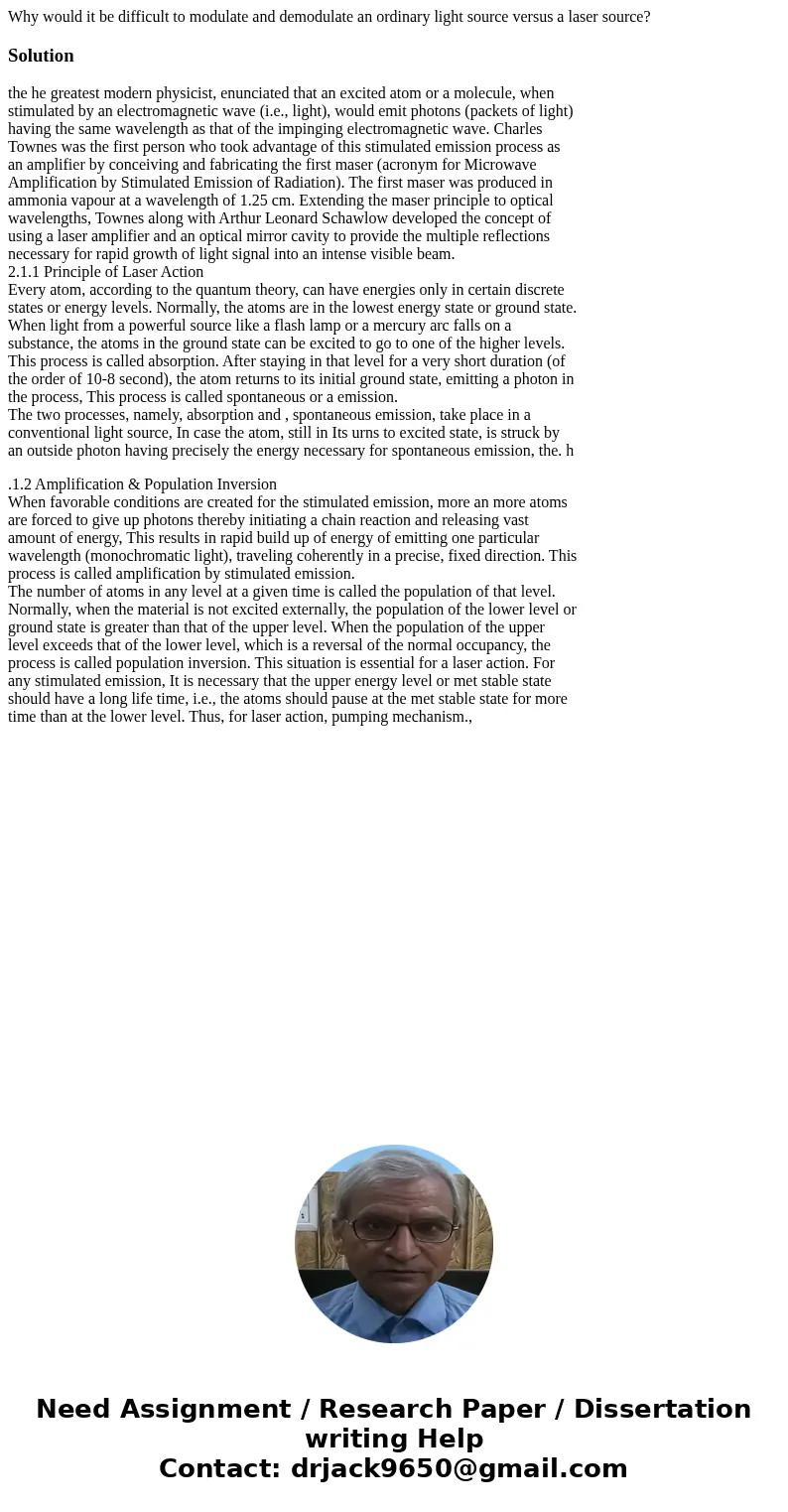Why would it be difficult to modulate and demodulate an ordi
Why would it be difficult to modulate and demodulate an ordinary light source versus a laser source?
Solution
the he greatest modern physicist, enunciated that an excited atom or a molecule, when
stimulated by an electromagnetic wave (i.e., light), would emit photons (packets of light)
having the same wavelength as that of the impinging electromagnetic wave. Charles
Townes was the first person who took advantage of this stimulated emission process as
an amplifier by conceiving and fabricating the first maser (acronym for Microwave
Amplification by Stimulated Emission of Radiation). The first maser was produced in
ammonia vapour at a wavelength of 1.25 cm. Extending the maser principle to optical
wavelengths, Townes along with Arthur Leonard Schawlow developed the concept of
using a laser amplifier and an optical mirror cavity to provide the multiple reflections
necessary for rapid growth of light signal into an intense visible beam.
2.1.1 Principle of Laser Action
Every atom, according to the quantum theory, can have energies only in certain discrete
states or energy levels. Normally, the atoms are in the lowest energy state or ground state.
When light from a powerful source like a flash lamp or a mercury arc falls on a
substance, the atoms in the ground state can be excited to go to one of the higher levels.
This process is called absorption. After staying in that level for a very short duration (of
the order of 10-8 second), the atom returns to its initial ground state, emitting a photon in
the process, This process is called spontaneous or a emission.
The two processes, namely, absorption and , spontaneous emission, take place in a
conventional light source, In case the atom, still in Its urns to excited state, is struck by
an outside photon having precisely the energy necessary for spontaneous emission, the. h
.1.2 Amplification & Population Inversion
When favorable conditions are created for the stimulated emission, more an more atoms
are forced to give up photons thereby initiating a chain reaction and releasing vast
amount of energy, This results in rapid build up of energy of emitting one particular
wavelength (monochromatic light), traveling coherently in a precise, fixed direction. This
process is called amplification by stimulated emission.
The number of atoms in any level at a given time is called the population of that level.
Normally, when the material is not excited externally, the population of the lower level or
ground state is greater than that of the upper level. When the population of the upper
level exceeds that of the lower level, which is a reversal of the normal occupancy, the
process is called population inversion. This situation is essential for a laser action. For
any stimulated emission, It is necessary that the upper energy level or met stable state
should have a long life time, i.e., the atoms should pause at the met stable state for more
time than at the lower level. Thus, for laser action, pumping mechanism.,

 Homework Sourse
Homework Sourse